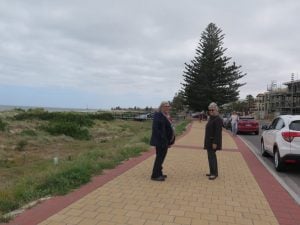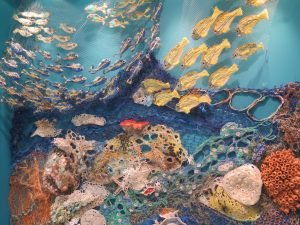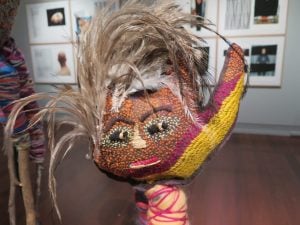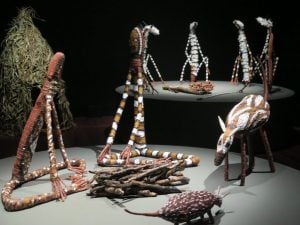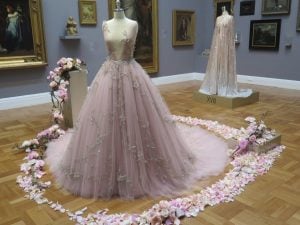Adelaide city skyline from Victoria Square
CLICK ON IMAGES TO ENLARGE
18 October – 6 November 2017
Very excited to be heading off soon for South Australia, a State I have visited for short periods of time, but this trip will take us over two weeks. This trip I am going with my cousin Sandra, who with her husband Trevor, have been long time residents of our Federal capital, Canberra. I’ll be driving from Newcastle to Canberra on 18 October so I can spend Sandra’s birthday with her the next day, then on 20 October we fly out from Canberra to Adelaide.
After an early arrival of about 7.30am we will have three days in which to explore in and around Adelaide, including the South Australian Art Gallery which according to reports has approximately 780,000 visitors each year. There are lots of other galleries in and around Adelaide so we will be kept busy!
The next adventure will be a seven day small group tour from Adelaide to the Flinders Ranges, and I am guessing this will be one of the highlights of our trip. Destinations include Burra and Peterborough, Wilpena Pound and Arkaroola Resort, and on the way home we will ride on the original Afghan railway train from Quorn through to Port Augusta where we will spend our last night. We will have lunch at the Clare Valley on our return to Adelaide the next day.
From Adelaide we then travel south for a three day visit to Victor Harbor which will include a one-day tour of Kangaroo Island (another highlight!) and another return ride, this time on the Cockle Train, to Gulwa.
Next stop will be Nuriootpa in the Barossa Valley for a three day stay, and some wining and dining while exploring the interesting villages in the Barossa. Our last night will be at Hahndorf in the Adelaide Hills, then a casual drive to Adelaide to catch a flight to Canberra in the evening.
I hope you will join us on our South Australian adventure!
20th to 22nd October 2017
20.10.2017
This morning we were up at 4am so we could catch the 6am flight from Canberra to Adelaide. Cloudy morning, and a bumpy beginning to the flight, but arrived on time to be met by Sandra’s friend, Barbara, who had bravely offered to collect us and our luggage from the airport. Barbara was very kind to drive us to her home which has fantastic views over the ocean and city, drove us to Seacliff Beach for a walk along the esplanade (below), and cooked a delicious lunch, before driving us back to our hotel. This evening we ate at our hotel and were grateful for a reasonably early night. Tomorrow we will visit the Adelaide Central Markets and the Art Gallery of South Australia, looking forward to it.
21.10.2017
Entrance to Adelaide Central Markets
Established in 1869, the Adelaide Central Market has been a thriving hub of food and culture for over 148 years. With over 80 traders under one roof, the Adelaide Central Market is one of the largest under cover market in the Southern Hemisphere, buzzing with life and colour all year round. The Market offers a huge range of fresh food including fruit and vegetables, meat and poultry, seafood, cheeses, bakery, small goods and health foods, along with some of Adelaide’s most popular cafes and eateries. With over 8.5 million visitors every year, the Adelaide Central Market remains the food Mecca for multicultural cuisine and fresh produce.
Not too early rising today, recovering from a busy day yesterday! We walked to the Adelaide Central Markets, and found a cafe for breakfast, before exploring the markets. It is a huge area with so many different types of shops, the fruit and vegetables looked fresh and inviting, the flowers were beautiful, and the cheeses, meats, cakes, pastries, nuts etc were plentiful and looked delicious. If you are a follower of Poh, the cook, we found her cafe which was very colourful and busy (left and below left) with lots of customers drinking coffee and eating Poh’s delicious cooking.
Then is was time to walk to the Art Gallery of South Australia. The Gallery is one of several major cultural institutions that line North Terrace. Its fine classical building, with colonnaded portico, opened in 1900. This section of the building is now known as the Elder Wing, named after the Gallery’s first major benefactor, Sir Thomas Elder. Additions to the building followed in 1936, 1962, 1979 and 1996. The Gallery houses a large collection of some 38,000 works, with a focus on Australian art, Aboriginal art, British art and Asian art, textiles and ceramics.
As is happening in cities all over, Adelaide is also undergoing some roadworks to extend the light rail, so we had to find our way through the work zone to the Gallery, our first stop was the cafe to have some lunch. There are some special exhibitions on until late October including the Tarnanthi: Festival of Contemporary Aboriginal & Torres Strait Islander Art, delivering the best and brightest in Aboriginal and Torres Strait Islander art.
One of the first exhibitions we looked at, Tarnanthi, the best of contemporary Aboriginal and Torres Strait Islander art, was very impressive. Erub (Darnley) Island is one Australia’s most remote places, located in the Torres Strait Islands in the most north easterly point of Australia. Indigenous and non-Indigenous artists from Erub Arts Collaborative have worked with ghost nets (abandoned fishing nets) to create an immersive installation of an underwater world including vivid coral and magnificent sculptural fish, turtles, sharks and jellyfish. Ghost Nets of the Ocean shares the artists’ concerns for the loss of marine life and environmental damage caused by rogue nets, bringing to light the irreparable harm that discarded nets cause to marine life.
Important storytelling continued in the work of Yarrenyty Arltere Artists from the Larapinta Valley Town Camp. They have made a series of soft sculptures of life-sized self portraits, titled Every face has a story, every story has a face: Kulila! as well as a moving image work, Petrol been wasting all our lives.
Six monumental photographs capture the ephemeral act of Painting on Country with tutu (pigment), a material used ceremonially to paint on the land or the body. In the words of artist Keith Stevens: “We are making this work because we want to be sitting on our country so we can look after it. White-fellas are seeing all our work on canvas but we want people to see the places that really are this dreaming.”
Another impressive exhibition was that of Paul Vasileff, talented South Australian fashion designer. His exquisite dresses have appeared on the red carpet of the Golden Gloves, the Academy Awards, Logies and Grammys and he has garnered an international clientele. At the age of twenty six Vasileff was named 2017 Young Australian of the year, an extraordinary achievement for this rising star of the Australian fashion industry.
Feeling foot sore but very happy that we had seen such a wonderful exhibition, we had enough stamina to visit one smaller art gallery collective to see the work of many local artists, then relaxed with a coffee and a cake before heading back to the hotel to rest our tired bodies!
Tomorrow we will visit the Adelaide Botanical Gardens, looking forward to it.
Delightful lake (plus ducks) looking toward the Gardens Cafe
22.10.2017
 The Adelaide Botanic Garden is a tranquil retreat on the north-eastern corner of the CBD and is a much-loved refuge for visitors and locals alike. It occupies 51 hectares of land between North Terrace and Botanic Park (north/south) and between the Royal Adelaide Hospital and Hackney Road (east/west). Plantings in the garden reflect all periods of its development from the mid-1850s to the present and there are also some notable heritage structures. These include the 1875 glasshouse known as the Palm House (right), and the Museum of Economic Botany, built in 1881. The administrative centre of the garden is housed in the 1909 Goodman Building, the former headquarters of the Municipal Tramways Trust, located near the Hackney Road entrance . Next door is the Herbarium, housed in a converted Tram Barn.
The Adelaide Botanic Garden is a tranquil retreat on the north-eastern corner of the CBD and is a much-loved refuge for visitors and locals alike. It occupies 51 hectares of land between North Terrace and Botanic Park (north/south) and between the Royal Adelaide Hospital and Hackney Road (east/west). Plantings in the garden reflect all periods of its development from the mid-1850s to the present and there are also some notable heritage structures. These include the 1875 glasshouse known as the Palm House (right), and the Museum of Economic Botany, built in 1881. The administrative centre of the garden is housed in the 1909 Goodman Building, the former headquarters of the Municipal Tramways Trust, located near the Hackney Road entrance . Next door is the Herbarium, housed in a converted Tram Barn.
Provision for a public garden was made by Surveyor General Colonel William Light in his 1837 plan for Adelaide. Many believed at this time that access to public open space was an important factor in maintaining healthy cities and that public recreational gardens were markers of civilized societies. Light marked out a space for the garden near the Torrens in what is now the West Parklands, but the area was subject to flooding and early attempts to establish a garden had to be abandoned. A second attempt also failed. Attention shifted to the northern bank of the Torrens opposite the present location of the Adelaide Zoo and here, in 1839, an experienced gardener by the name of John Bailey (who also described himself as ‘Colonial Botanist’) made a third attempt. This garden was more successful, but by then the colonial purse was empty and the funds needed to sustain the garden were not forthcoming.
 It was a delight walking through the gardens on a fine but cool day, after Sandra’s friend Janet collected us, we were lucky enough to find a parking spot almost at the front gate. Firstly we found the Waterlily Pavilion to see not only the beautiful water lilies, but the tropical plants that grew in and around the Pavilion. Next we walked to the Bicentennial Conservatory, a stunning building built in celebration of Australia’s 1988 Bicentenary, and designed by South Australian architect Guy Maron, it is the largest single span conservatory in the Southern Hemisphere.
It was a delight walking through the gardens on a fine but cool day, after Sandra’s friend Janet collected us, we were lucky enough to find a parking spot almost at the front gate. Firstly we found the Waterlily Pavilion to see not only the beautiful water lilies, but the tropical plants that grew in and around the Pavilion. Next we walked to the Bicentennial Conservatory, a stunning building built in celebration of Australia’s 1988 Bicentenary, and designed by South Australian architect Guy Maron, it is the largest single span conservatory in the Southern Hemisphere.
The building is curvilinear in shape – 100 metres long, 47 metres wide and 27 metres high. An elegant steel superstructure supports the 2,434 metres2 of toughened glass, which forms the roof, walls and doors. Its glistening and distinctive shape is a landmark, particularly for visitors flying in to Adelaide.
 Inside the Bicentennial Conservatory is a lush display of lowland rainforest plants from northern Australia, Papua New Guinea, Indonesia and the nearby Pacific Islands. Many of these plants are at risk or endangered in their natural habitats. The next building we discovered was the spectacular Palm House, an exquisite, painstakingly restored Victorian glasshouse imported from Bremen, Germany in 1875. It is thought to be the only one of its kind still in existence. The Palm House was designed by German architect Gustav Runge and the sophisticated engineering techniques used in its construction make it a benchmark in glasshouse design. The hanging glass walls are similar to those used in today’s city buildings and were very advanced for the time. This sophistication, and Adelaide’s dry climate, probably account for the building’s survival. We didn’t enter the building, but took some photographs and just stood in awe of such a beautiful old building.
Inside the Bicentennial Conservatory is a lush display of lowland rainforest plants from northern Australia, Papua New Guinea, Indonesia and the nearby Pacific Islands. Many of these plants are at risk or endangered in their natural habitats. The next building we discovered was the spectacular Palm House, an exquisite, painstakingly restored Victorian glasshouse imported from Bremen, Germany in 1875. It is thought to be the only one of its kind still in existence. The Palm House was designed by German architect Gustav Runge and the sophisticated engineering techniques used in its construction make it a benchmark in glasshouse design. The hanging glass walls are similar to those used in today’s city buildings and were very advanced for the time. This sophistication, and Adelaide’s dry climate, probably account for the building’s survival. We didn’t enter the building, but took some photographs and just stood in awe of such a beautiful old building.
 The last of its kind in the world the Santos Museum of Economic Botany is home to an amazing permanent collection, much of which dates back to the original museum display 130 years ago. Also on show are intriguing, beautiful and immersive touring exhibitions which are sure to inspire. The museum showcases countless plants and their various uses with a focus on minimising waste. The building is a treasure in itself and has been lovingly restored featuring many original details. We spent quite a lot of time in the Museum looking at the large exhibition of plants, seeds etc. then made our way to the Diggers Garden Shop where passionate gardeners can purchase all manner of seeds and plants for their own gardens. It is a lovely area and we had fun looking at all the plants etc on display.
The last of its kind in the world the Santos Museum of Economic Botany is home to an amazing permanent collection, much of which dates back to the original museum display 130 years ago. Also on show are intriguing, beautiful and immersive touring exhibitions which are sure to inspire. The museum showcases countless plants and their various uses with a focus on minimising waste. The building is a treasure in itself and has been lovingly restored featuring many original details. We spent quite a lot of time in the Museum looking at the large exhibition of plants, seeds etc. then made our way to the Diggers Garden Shop where passionate gardeners can purchase all manner of seeds and plants for their own gardens. It is a lovely area and we had fun looking at all the plants etc on display.
 It was then time for lunch and we chose Simpson Kiosk on the shores of the lake, and shared a delicious lunch with the birds and ducks who were also visiting in the hope of getting some scraps! The walk around the lake after lunch was wonderful, some enormous large trees set among the beautiful lawns and gardens, and lots of birds. We made our way to the International Rose Garden and wandered among the colourful display of roses, and the glorious climbing rose canopies. By now our feet were beginning to tell us it was time to make our way home, so we meandered through the gardens to the front entrance, and Janet kindly drove us back to the hotel.
It was then time for lunch and we chose Simpson Kiosk on the shores of the lake, and shared a delicious lunch with the birds and ducks who were also visiting in the hope of getting some scraps! The walk around the lake after lunch was wonderful, some enormous large trees set among the beautiful lawns and gardens, and lots of birds. We made our way to the International Rose Garden and wandered among the colourful display of roses, and the glorious climbing rose canopies. By now our feet were beginning to tell us it was time to make our way home, so we meandered through the gardens to the front entrance, and Janet kindly drove us back to the hotel.
We had decided to do some shopping for breakfast tomorrow as we have an early pickup by our tour operators as we set out on our adventure to the Flinders Ranges after a busy, but wonderful three days around Adelaide.



